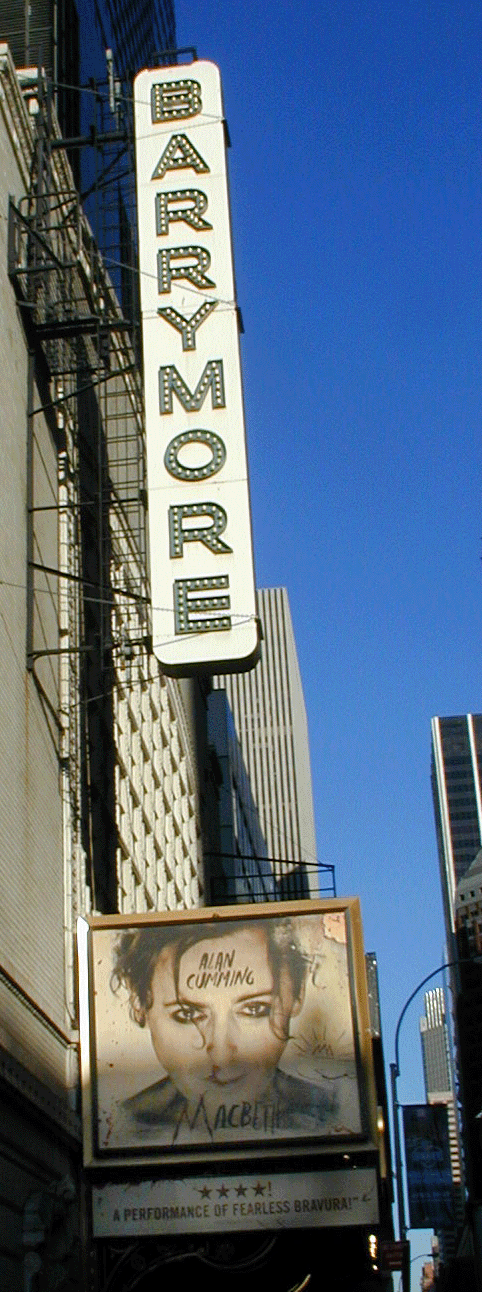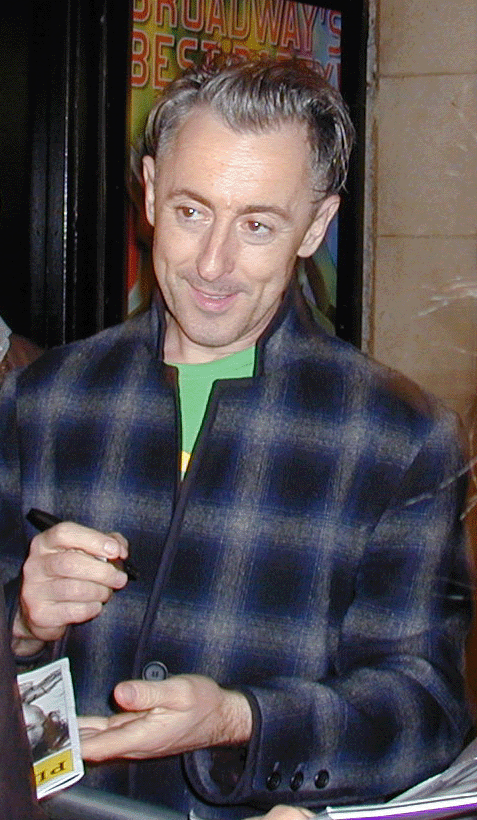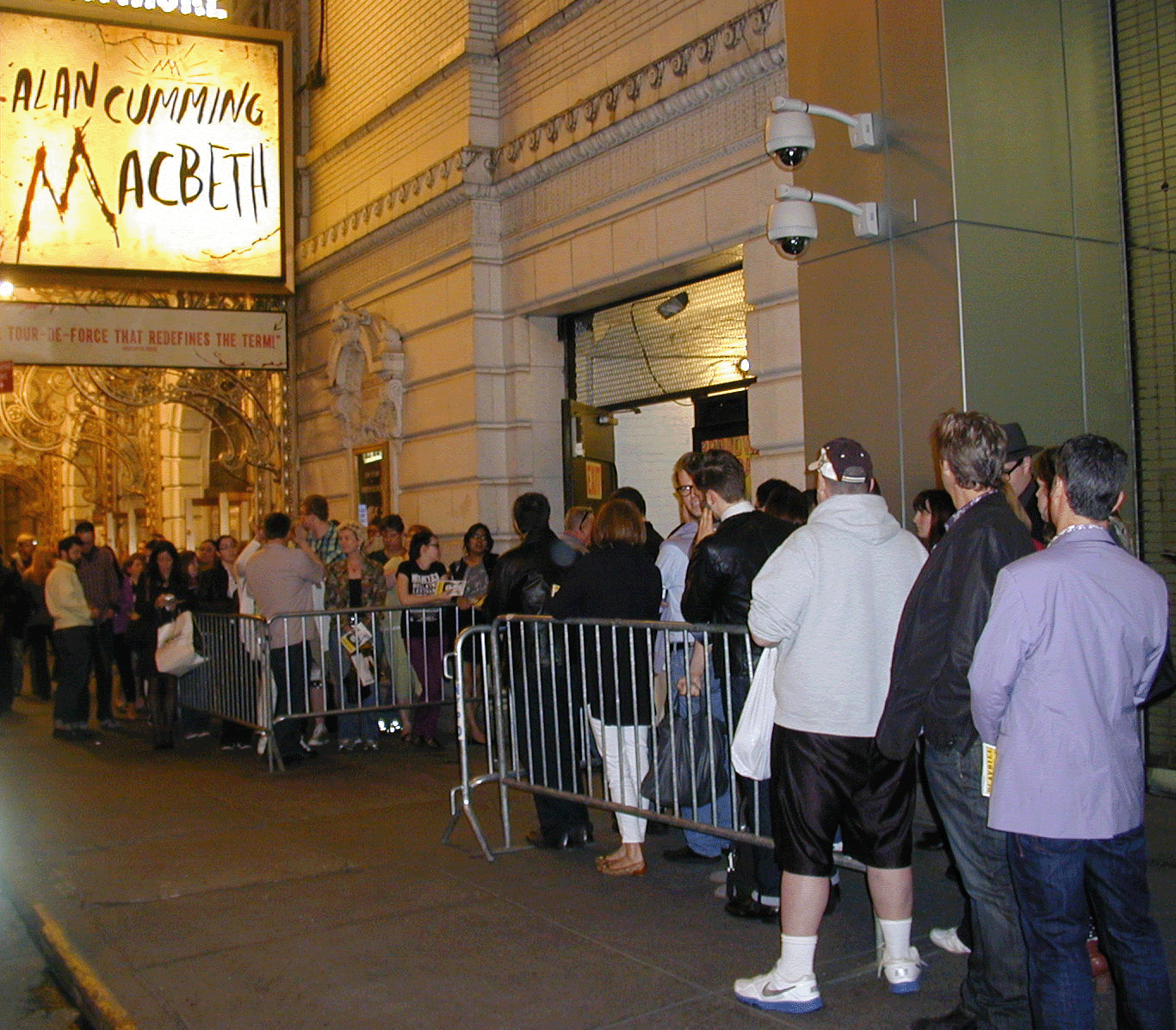Macbeth Raises A Different Head on BroadwayShakespeare’s Macbeth has appeared in a new guise at the Barrymore Theater on 47th Street in New York City.  Macbeth, Shakespeare’s shortest and bloodiest play ("I am in blood/Stepp'd in so far that, should I wade no more,/Returning were as tedious as go o'er") is known for maligning the actual Scottish King who was born in 1005 and ruled Scotland for 17 years (1040-1057). Well regarded by the historians of the time, and seen as a benevolent king in the Irish annals, the real Macbeth gave money to the poor and traveled to the Rome, indicating that he must have considered his kingdown in a state of enough peace to have left for a considerable length of time. The play is regarded as “dangerous” by many thespians, and it is generally considered bad luck to say the name of the play in the theater. This has its origin, according to some, in the amount of supernatural activity in the play. Whatever the reason, the Barrymore Theater, in a nod to this belief has placed signs on the doors specifically requesting the name of the play not be said in the theater. Inside the theater, the "Broadway Store" has a variety of Macbeth T-Shirts available along with CDs of Alan Cumming performing. These can be found on line here The Macbeth story as told by Shakespeare, has been played many times in films and on stage. It has been rewritten in many guises before. The film Scotland PA sets Macbeth in a diner in Pennsylvania while Joe MacBeth and Men of Respect deal with Macbeth as a gangster and thus reset the story in a new context and steer away from the actual Shakespearian text. One of the most remarkable filmed version is surely Akira Kurosawa's Kumanasu-joo (literally Spider Web Castle or as generally shown Throne of Blood). The current production, remains basically true to the Shakespearean text, but is a kind of “Macbeth meets Marat/Sade" (see Paul Weiss’ The Persecution and Assassination of Jean-Paul Marat as Performed by the Inmates of the Asylum of Charenton Under the Direction of the Marquis de Sade (originally published in German under the impressive title Die Verfolgung und Ermordung Jean Paul Marats dargestellt durch die Schauspielgruppe des Hospizes zu Charenton unter Anleitung des Herrn de Sade)). In the current production, originally done by the National Theatre of Scotland, the play becomes a tale told by an inmate full of sound and fury. What it signifies is certainly something which will be discussed for some time. So rather than producing Macbeth as written, the entire play is told by a recent arrival in a mental institution (Scottish born and raised Alan Cumming) who plays virtually all the roles. As the play opens, a doctor and attendant are admitting a new patient. There is no dialog. As the two employees leave the patient alone he calls out “When shall we three meet again” and the Shakespeare text begins. In this most unusual performance the entire Shakespearean text is played by Mr. Cumming who plays nearly a dozen and half of the characters. While doubling is not uncommon in plays, this is extreme shall we say. The wonder of it, is that Mr. Cumming not only plays all the roles but manages to produce clearly definable voices and personalities, each with their own body language and distinctly identifiable. This is a real tour de force – on steroids. In this one act play, lasting approximately an hour and forty five minutes, Mr. Cumming never gets a chance to leave the stage to give himself a rest while other performers play their scenes. It is interesting that Mr. Cumming has chosen to play Macbeth with a Scottish accent, a decision which failed abysmally with Orson Welles in his filmed version of Macbeth. Here however, it works quite well and one feels that it is much like Gerard Butler’s decision to let King Leonides of the Spartans have a Scottish accent in his film 300. The accent sounds rougher and tougher than say an upper class English would in the part. It might even be (as one scholar has pointed out) that it resembles more the English of Shakespeare’s day. (The actual king would have normally of course spoken Gaelic and not English at all). The single set – the interior of the asylum – is properly institutionally cold and hard with tiled walls. Hanging high above the set are three monitors which intermittently come on, revealing different views of the protagonist frequently as he shifts between his various characters or allowing views of the stage that would not be possible for a stationary audience. In one “shot” the cameras point down on a concealed Cumming who would not normally in his concealment be visible to the audience. The sound design involves some music but also a number of sounds both (diegetic and non-diegetic) which work well in establishing mood and emotional impact of the play. As Mr. Cumming says the opening line, and the doctor and attendant leave, the shut a door with a loud metallic crash – and Cumming finishes the line with “In thunder lightning or in rain”. At the end of the performance Mr. Cumming received a well-deserved rousing standing ovation from the audience. Outside people waited patiently to see the star and get an autograph. Mr. Cumming graciously chatted and signed autographs before getting into a waiting car and heading (one hopes) for a well-deserved rest after what must be one of the most exhausting performances in theater.  The play is in a limited run engagement and is scheduled to close on July 14th. Tickets are available on line at In addition to Mr. Cummings, the cast includes Chris Kipiniak, Jenny Sterlin and Brendan Titley who perform admirably in a play which is dominated by a single character. |

